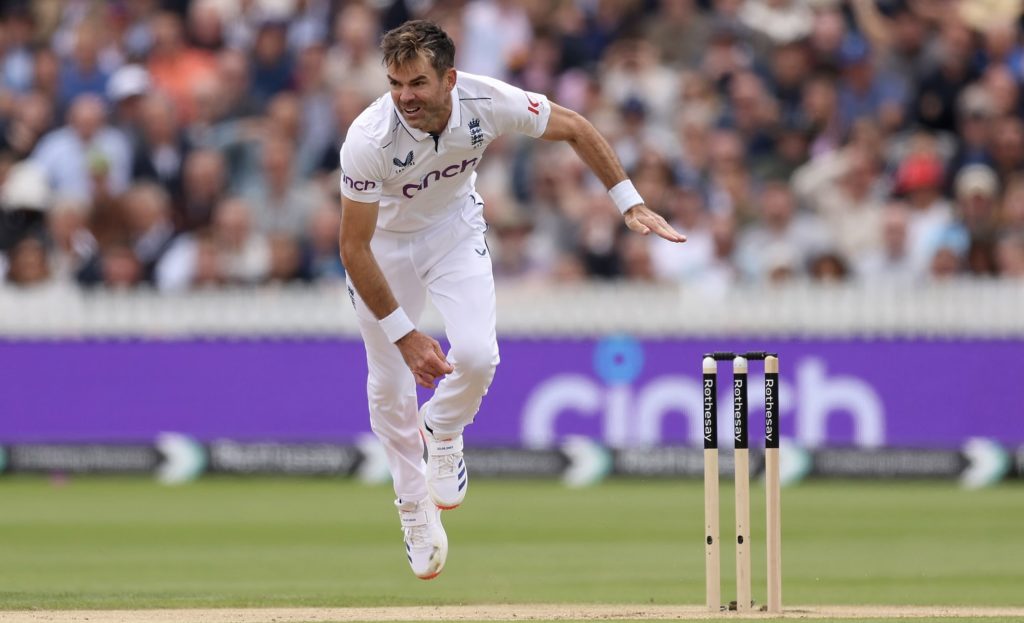Jimmy Anderson was pushed out of Test cricket despite still bowling brilliantly. The Proteas can’t make the same errors with their veterans, writes RYAN VREDE.
It took a 90-minute meeting for Rob Key, Brendon McCullum, and Ben Stokes to end Anderson’s Test career.
Anderson’s response was to ask for one last Test, at Lord’s, where he bowled with the type of menacing control and skill that has defined his career.
Those who’ve agreed with the decision to end a 21-year, 188-Test career pointed to the emergence of Gus Atkinson, who took 12 wickets in the Test, as vindication.
This feat, while notable, has to be seen in context – the Windies are the world’s eighth-ranked Test side, they’ve won just six of their last 20 Tests, and their top-ranked batter – Kraigg Brathwaite – is ranked 39th in the world.
The Windies are no measure of an elite Test team, specifically an elite Test bowler. Neither is Sri Lanka, who England host for three Tests across August and September.
Atkinson, and any of the other emerging core of fast bowlers (most of whom are injured or in Ollie Robinson’s case, licking their wounds after being caned for 43 runs in a county match) who the England leadership has talked up, will be examined in Pakistan in October and New Zealand in December.
Even then, it will only be in a year, when India visits for five Tests, that the leadership’s decision will be exposed as right or wrong.
Key, McCullum and Stokes have pointed to the Ashes in November 2025 as being a series too far for Anderson. It may be an Ashes too soon for Atkinson or any of those speedsters waiting in the wings.
Back to the present, it would be remiss not to note Anderson’s role in Atkinson’s efficacy. Test cricket success is primarily built on pressure (exerting and absorbing it) and partnerships.
Anderson’s first spell of the Test went for just 11 runs in five overs. This pressure would have played a significant part in Brathwaite chasing a wide Atkinson delivery and chopping on, two deliveries into him replacing Anderson.
Anderson’s choke would reach deeper into the Test. Indeed, three of Atkinson’s five second-innings sticks came when bowling in partnership with Anderson.
There is no coincidence here, and it was a glimpse of what Anderson’s role could have been, had he not been a victim of the notion that he is too old for Test cricket.
Anderson, at 41, is still England’s most complete fast bowler. He may not strike with the regularity he did at the peak of his career, and he may not operate at the speeds he used to, but he remains a force. His ability to exploit conditions that promote swing and seam, is rivalled only by Indian maestro, Jasprit Bumra.
Neither can he be accused of poor conditioning or chronic injury, two ever-present issues with older fast bowlers.
To discard him, especially so soon after Stuart Broad’s retirement, appears to be a premature move that could signal the start of a bowling decline that will only be arrested once the rookies adapt to the unique demands of Test cricket. And there is no certainty they will, particularly in the absence of a senior fast bowler to guide them.
You can’t build a cricket argument against Anderson’s presence being critical to the development of Atkinson and his ilk. There have been fast bowlers who’ve held on too long, and their retention undoubtedly compromised their team. This isn’t the case with Anderson, which makes his forced retirement so much more perplexing.
I hope the Proteas don’t make this grave error. Recently, I examined the age profile of the Proteas’ T20 World Cup squad, arguing that the experienced core needed to be retained through to the next tournament, provided their performance levels endure and they stay injury-free.
I argued that performance level, not age, should be the key determinant of a player’s value. This must be the case for the Proteas, who boast a clutch of older players who are currently operating at an elite level, including Keshav Maharaj (34) and Tabraiz Shamsi (34).
If they, or others in this category, decide to call it a day, that’s fine. But if they’re delivering high-level performances, forcing them to quit under the guise of promoting young players is nonsensical. If a kid is better than a seasoned pro and gives his team a better chance of winning, he should play. It’s that simple.
England has no ready-made replacement for Anderson, and South Africa currently has no ready-made replacements for the bulk of their veterans.
Test head coach Shukri Conrad is finding this out the hard way after axing opening batsman Dean Elgar, despite him being one of the team’s most consistent batsmen. His replacements have, to date, failed to repay Conrad’s faith in them.
The Proteas can’t make the same error with their senior crew. Discernment is needed to ensure players with enduring potency aren’t put out to pasture. Let’s not do an England.
Photo: Alex Davidson/Getty Images







